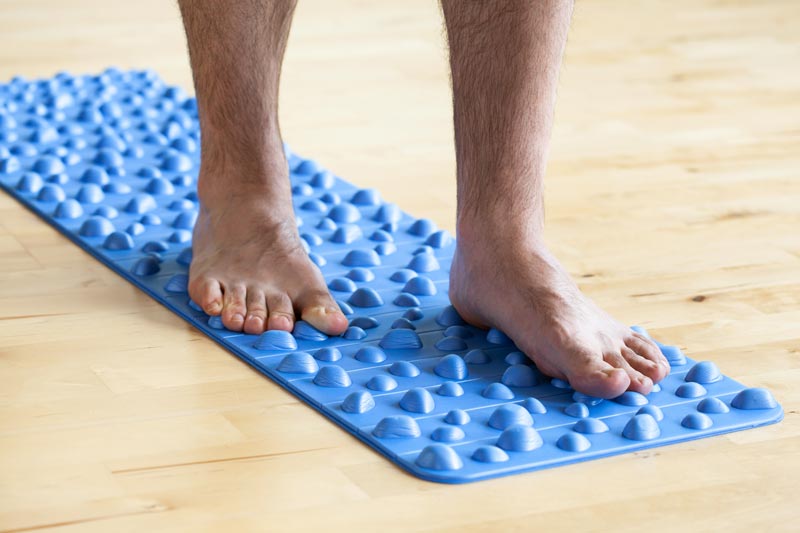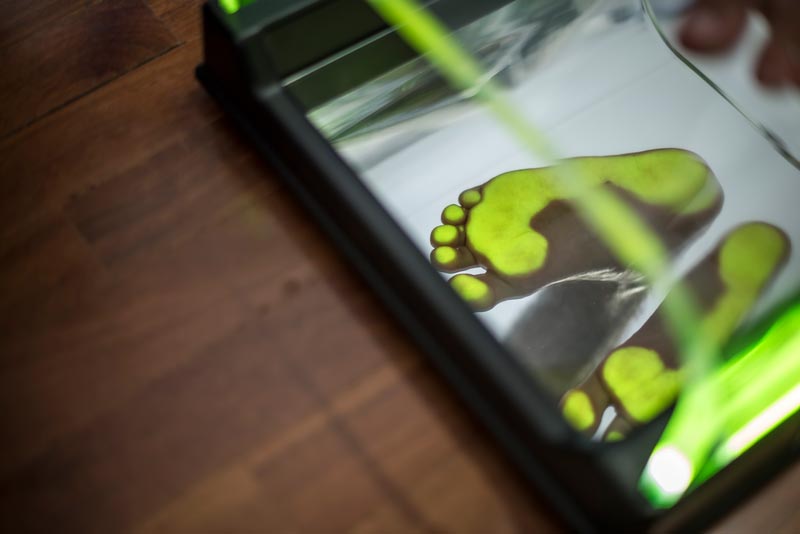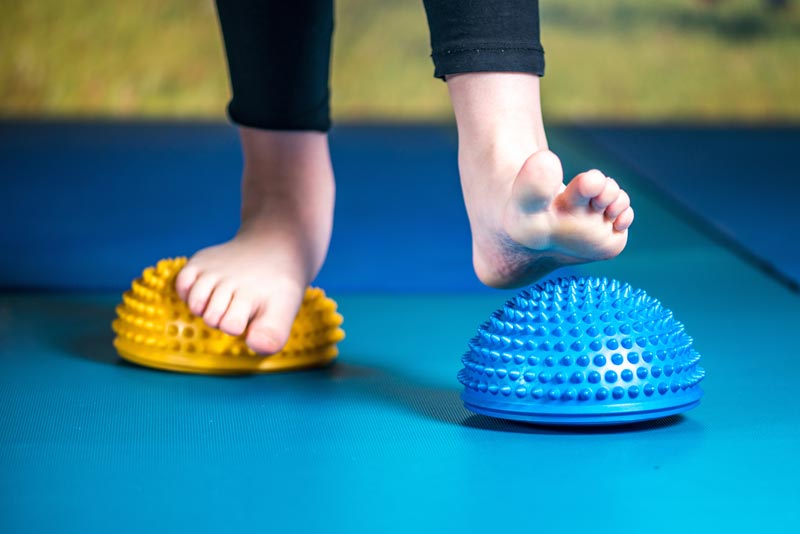
We speak of a fallen arch when the longitudinal foot arch loses integrity and gets flat. The whole sole comes into full or almost full contact with the ground when a person has a fallen arch. This condition is sometimes referred to as a flexible flatfoot, although fallen arches and flat-footedness aren’t the same, as we’re about to explain in the next section.
It’s called a flexible flatfoot because when the arch is not bearing weight, it is visible as such. It gets flat only when you stand.
Both children and adults can have fallen arches. In fact, this condition is quite common. The arch is formed by ligaments and tendons attached to the foot and heel bones. Those work together to build it. When the pull of the tendons isn’t sufficient, there is an absence of an arch or a low one. Fallen arches can affect one foot or both
Fallen arches develop with time, while people are born with flat feet. Eventually, fallen arches lead to flat feet. A lot of people develop them due to certain injuries, like dislocating the foot bones or tearing or ripping the tendons.
Fallen arch symptoms get worse with age, and sometimes it is age that causes the condition. It’s imperative to take preventive measures as soon as one becomes aware of it.
The lack of critical support in the foot arch can lead to a series of complications. When you walk with a fallen arch, the pressure of your body moves to other parts of the feet. This shift can cause extensive pain and discomfort if not appropriately treated and severe foot and joint problems in some cases.

The most frequent causes of fallen arches are obesity, pregnancy, age, injuries, postural deformity, or arthritis.
Being pregnant or overweight exerts pressure on the foot tendons. While only a doctor can determine whether it’s your weight that’s causing the problem, it’s definitely an aggravating factor. There are two ways in which pregnancy can change the arches of your feet: hormonal changes and weight gain. Women can experience noticeable arch changes during the first pregnancy. They are less pronounced during subsequent pregnancies.
The 27 bones in the foot are held together by muscle tissue and ligaments, which start to weaken with age. Arches drop as a result, and people's feet get flatter. Over time, people's shoe sizes increase by around half a size, and the reason is the same.
Deformed posture can lead the arch to collapse over time. This is the case after years of wear and tear, compromising the integrity of the tendon that supports the arches running along the inside of the ankle.
Arthritis, rheumatoid in particular, is a leading cause of fallen arches. This joint inflammation can cause almost unbearable suffering because the joints in the feet and ankles do not function properly. The muscle tissue that supports the arch loosens, and the arch falls.
Tendinitis is an inflammation of the tendon, often caused by injury. The arch is mainly supported by the posterior tendon of the tibia. When the tendon is overused or torn, you develop this long-term inflammation. Tendon damage may lead the foot arch to flatten. Long-distance runners, in particular, are prone to such injuries and are advised to wear supportive footwear at all times, not only when running.
Last but not least, fallen arches can be a hereditary condition.
Other causes include, but are not limited to:
- Excessive walking or standing on high heels
- Wearing shoes with poor arch support
- Muscle damage due to overwhelming foot strain
- Abnormality at birth
- Ruptured or over-stretched tendons

- Limited or no ability to stand for extended periods of time
- Tired feet
- Inability to run or perform strenuous physical activity
- Extreme foot pain
- Wrong posture
- Severe back pain, sometimes due to poor posture, which strains the back
- Orthotics for fallen arches
- Regular stretching exercises
- Ice and compression to reduce swelling and pain
- Pain medication
- Physical therapy
The use of orthotic arch supports can be tremendously helpful in preventing or alleviating the symptoms of fallen arches and flat feet. A suitable home exercise routine and taking proper care of the feet can manage or even prevent the symptoms. Your doctor or physical therapist should establish this routine.
It’s important to point out that foot orthotics cannot actually “cure” fallen arches. What they can do is prevent them from worsening.

Structurally supportive footwear is among the most effective treatment methods for fallen arches. You could benefit from custom-made arch supports, which are created based on the contours of your feet.
Sports footwear with the terms "stability" or "motion control" can be quite beneficial for fallen arches. This is because the shoe controls the flexibility and the motion of the fallen arch, which tend to be excessive.
A shoe insert with a cup that holds the heel and helps support the arch structure can be highly beneficial in terms of preventing foot injury, body alignment, and pain relief.

If you have fallen arches, it's a good idea to avoid walking barefoot. Every step you take results in body misalignment, leading to a domino effect. Wearing supportive house shoes or slippers at home can prevent exacerbation of the symptoms and provide pain relief.
Your orthotics of choice shouldn’t be too rigid or too flexible. They should be moderately firm to absorb shock when you’re physically active. When force is applied to Milton Orthotic Center inserts, they compress and absorb the shock so it doesn’t reverberate throughout your joints.
Wearing orthotics for foot pain and flat feet comes with an adaptation period, so it’s essential to be careful when choosing.
Milton Orthotic Center’s experienced team is well-versed in the different causes of fallen arches. The team works with each customer individually to find the most suitable orthotics to alleviate the condition.
Please get in touch with Milton Orthotic Center for the very best outcome of fallen arch prevention and treatment. This is a crucial step to take in the direction of improved well-being and recovery.
